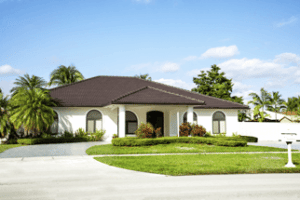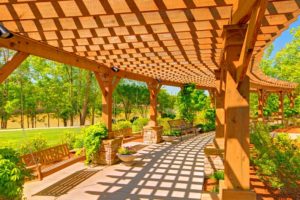The Federal Reserve cut the federal funds rate at its meeting this week, marking the second time in only 11 years the group has done so. The rate now clocks in at 1.75-2%, down from 2.25-2.5% late last year.
What the Federal Funds Rate Does and Why Cut It
The primary goal of the Federal Reserve System is to ensure a strong economy and a healthy supply of money. It also regulates the nation’s banks and financial institutions.
The agency’s Federal Open Market Committee (or FOMC) is the group that actually makes monetary policies and sets the funds rate. Generally, the FOMC increases the federal funds rate when the economy is strong (to prevent inflation) and lowers it when times are slow (to spur economic growth).
The FOMC opted for the latter on Tuesday, hoping to head off an economic downturn and steady the economy among ongoing trade wars. As Federal Reserve Chairman Jerome Powell explained, “We took this step to help keep the U.S. economy strong in the face of some notable developments and to provide insurance against ongoing risks.”
How Does the Federal Funds Rate Impact You?
A change in the federal funds rate won’t impact you directly or immediately, but it might trickle down to your pocketbook eventually. Variable-rate and short-term financing products are most influenced by the federal funds rate, with credit cards, auto loans, and HELOCs seeing the biggest impact.
According to Mike Kinane, head of U.S. Bankcard at TD Bank, a customer with a $1,400 credit card balance at a 14.4% rate would see their interest charge drop by about $0.30 per month within about 45 days. It’s not much, but it could help if you’ve got a significant credit card balance built up.
The federal funds rate cut could also impact you if you have a home equity line of credit (HELOC) or an adjustable-rate mortgage loan (ARM). With a HELOC, you’ll see your rate (and monthly payment) drop within one month or two. With an ARM, you’d feel the impact whenever your rate resets, which is usually once every six months or once per year.
Finally, the federal funds rate will also impact how much you earn on your savings. When the federal funds rate is cut, banks typically lower rates on their interest-earning accounts as well. If you have a significant amount of cash in your account, even a slight dip in rates could mean a big difference in how much you can earn annually.
What Can You Do About It
If you are already a homeowner, you have a few things to consider given the rate cut.
First, is it time to consider a refinance? As NerdWallet’s Holden Lewis said on Tuesday, “Mortgage lenders have cut rates to near three-year lows, partly in anticipation of today’s cut, but also out of fear that the ongoing trade war could slow the economy.”
Since mortgage rates and the federal funds rate aren’t directly correlated, it probably won’t mean rates will go any lower due to the rate cut, but they’re still at historically low levels, making a refinance a great way to save some cash and lower your monthly payment. (According to Freddie Mac, the average 30-year loan rate is just 3.73% as of September 19.)
You should also think about any home repairs or projects that may need to be done. Are you planning on aging in place? Do you want to make some accessibility changes around the house? Then it might be the time to pull the trigger on a home equity loan or line of credit (HELOC) to finance it.
Since HELOC rates are short term and often come with variable rates, they’re more directly influenced by the federal funds rate, and when the rate drops, so do interest rates on HELOCs. That can mean a more affordable way to finance your home improvements—a big win if you know you’ll need to pay for them anyway.
HELOCs can also help you consolidate higher-interest debts and streamline your monthly payments, which can also be beneficial when you’re on a limited income.
Finally, ask yourself: Are there better ways to save or earn money than a savings account? If you’ve got a lot sacked away in a savings account, you may want to look into options that earn more interest while rates are dropping. Certificates of Deposits can be options as well as online savings accounts which have fewer overhead costs (and therefore higher rates) than traditional banks.
More Rate Cuts to Come?
Many economists expect another rate cut at the next Federal Reserve meeting, which will take place Oct. 29-30. Powell said that “more extensive” cuts would be needed if the economy weakens. Until then, take steps to protect your retirement savings and capitalize on the lower interest rates that result.











